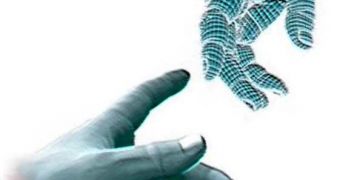Haptics is the study of touching behavior. Being an extremely important sense for humans, by providing valuable information about surfaces and textures, this seems to be the most recent target for electronics producers around the world.
Haptic technology refers to technology which interfaces the user via the sense of touch by applying forces, vibrations and/or motions to the user. This mechanical stimulation is used to create haptic virtual objects.
Vibrating phones, gaming controllers and force-feedback control knobs in cars, like BMW's iDrive, are examples of this technology. Vibrations allow people to be alerted of incoming calls without disturbing others and made the Nintendo Wii video game console a revolution in the game industry, in terms of computer interaction.
Touch provides a new way of interacting or manipulating the latest computer applications, but it's not limited to them. Often underrated, as the first electronic applications concentrated on visual and audible stimuli, touch and its critical importance for humans is just beginning to be explored by technology developers around the world.
The latest applications include hand exoskeleton devices that let you feel or touch what you see, thus helping you recognize object shapes, textures, stiffness or their weight. Virtual systems, like CAD, allow engineers and programmers to feel forces and local stimuli similar to those in real situations, which provides more intuitive manipulation.
Even our sex life is being influenced by devices relying on haptics. Some sex toys are now available which can be computer controlled; normally this comes in the form of an online movie or Web site which sends commands to the toy at scripted moments, allowing interactivity in real-time with virtual objects or even with other people located on different continents.
Remote surgery is another emerging field, now doctors being able to perform surgery without being present at the patient's side, with machine setup and patient preparation performed by local nursing staff.
These haptic-based technologies will provide new systems of collaboration over the Internet, or a new way of interacting over distance. We may be able to greet someone to shake hands virtually, instead of "buzzing" them.

 14 DAY TRIAL //
14 DAY TRIAL //